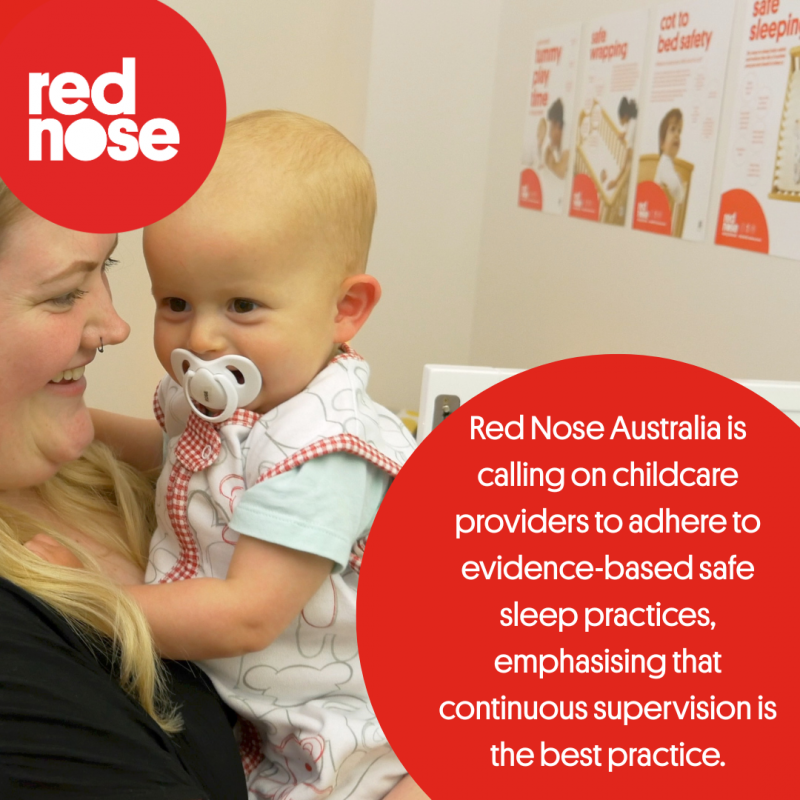Red Nose Australia is calling on childcare providers to adhere to evidence-based safe sleep practices, emphasising that continuous supervision is the best practice where the educator is in sight and hearing of the sleeping infant or child at all times. This is particularly important for infants under 12 months and infants or children with known risk factors for Sudden Unexpected Death in Infancy (SUDI).

Recent media discussions have suggested that 10-minute checks are adequate for supervising sleeping children. However, Red Nose states that continuous supervision, where an early childhood educator is within sight and hearing of the babies in their care, is best practice.
If continuous supervision is not possible — for example, in a family day care setting — regular quality physical bedside checks, at least every 10 minutes, and more frequently for infants or children with known SUDI risk factors should occur.
These bedside checks should include a visual inspection of the infant’s:
- Skin colour
- Breathing
- Sleeping position
Educators must ensure the child’s head and face remain uncovered. Supervision should not be conducted via CCTV nor through a viewing window, and educators should be in the same room as the children they are supervising.
Margaret Polacska, Director of Prevention and Education at Red Nose, emphasises:
“Following best practice guidelines is essential when it comes to infant safety. Safe sleep isn’t complicated, but it does require consistent, informed practice — and that starts with proper training. We cannot afford to compromise when the safety of children is at stake.”
Red Nose urges all childcare services to review and update their policies to ensure that continuous supervision is implemented, or risk assessments are conducted where best practice supervision can’t be followed, and staff are adequately trained and supported to maintain these practices.
Book in for a Safe Sleep Training session
Donate to help save little lives and support grieving families
